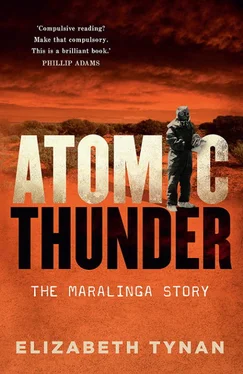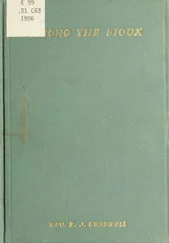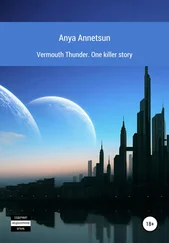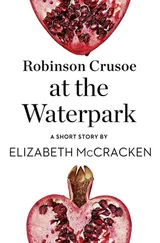In December 1941, just after the Japanese attack on Pearl Harbor brought the US into the war, the US Government established the Office of Scientific Research and Development to pursue atomic weapons science. This organisation began collaborating with the new Directorate of Tube Alloys, intensifying the information flow across the Atlantic for a short while. In the US, Glenn Seaborg pioneered research on the chemistry of plutonium at Berkeley in California that proved essential to bomb development. In the Metallurgical Laboratories in Chicago sufficient quantities of plutonium were created for the first time. The Americans, in remarkably quick time, did not actually need the British any more, and increasingly UK physicists were shut out. Political tussles erupted between the two allies over who would take the lead.
By early 1942 there was no doubt. The US was unstoppable. After considerable wrangling, Roosevelt and Britain’s prime minister Winston Churchill struck the Quebec Agreement, a painstaking negotiation that set the ground rules for engagement between the two countries and established a joint project to find and buy uranium. The rules limited British access to the project, which meant that British scientists developed expertise only in certain areas. The Americans would not agree to continuing British involvement on any other terms. The Quebec Agreement allowed British scientists to travel to the US to continue fulfilling the promise of the Frisch–Peierls Memorandum, and atomic bomb building activities in the UK were effectively closed down. All efforts were focused on America. The full implications of the Quebec Agreement were felt later when the US pushed them away completely and the British found themselves only partially equipped to build their own atomic weapon.
The Manhattan Project had its beginnings in 1939 when Roosevelt established the Advisory Committee on Uranium. It became a military and political priority in August 1942 when it was transferred to the control of the US Army. The project was named after New York’s Manhattan Island, where a group of engineers had been recruited to construct some of the required infrastructure. A new top-secret laboratory, built on a desert mesa at remote Los Alamos in New Mexico, was set up to build the bomb. Many British scientists went there to brave the desert winds and fight against time to build a weapon never seen before. Other laboratories around the country, notably the Lawrence Livermore National Laboratory in California and Oak Ridge, built on a farm in Tennessee, joined the effort as well. In all, around half a million people ended up working on the Manhattan Project.
From 1942, General Leslie Groves, a gung-ho US Army officer, led the atomic bomb project. Groves chose a young American physicist, J Robert Oppenheimer, to head the weapons laboratory. It was a surprising choice because Oppenheimer was open about his leftist leanings – some even thought he was a communist – and throughout the entire time he worked on the project he was enthusiastically investigated by the notoriously paranoid Federal Bureau of Investigation headed by J Edgar Hoover.
Groves and Oppenheimer gathered together a team of physics brainpower the likes of which had never worked together before. Hundreds of thousands of physicists, chemists and technicians joined the effort between 1941 and 1945, including some of the greatest contemporary thinkers. Many were European scientists who had fled the rise of Nazism. Once the political differences between America and Britain were sorted out, largely through the 1943 Quebec Agreement, a significant number of scientists joined the Manhattan Project from the UK as part of the British mission, including William Penney and Ernest Titterton, later pivotal in the Maralinga story. Klaus Fuchs – another pivotal scientist for a different reason – also joined the effort.
Physics had always been an open science, where an international community of theorists and experimentalists shared their hypotheses and observations. The Manhattan Project, of necessity, could not operate like that. Its activities were totally secret. The results of the speeded-up experimental work could not be published in the scholarly literature; the work could not be discussed at international conferences; other laboratories couldn’t attempt to replicate the findings of researchers unless they were inside the tent. This secrecy rankled many scientists, and some refused to accept it. The more extreme became atomic spies. Others, such as Ernest Titterton, went the other way. Titterton relished secret work, as his later behaviour in Australia abundantly demonstrated.
Professor William Penney, another Manhattan Project physicist, was likewise comfortable with secrecy. His extensive background in secret wartime explosives and atomic weapons research equipped him to head the British nuclear tests in Australia. Penney was part of the small team who selected the targets for the Manhattan bombs, surely an onerous responsibility for a donnish mathematical physicist. He also visited Hiroshima after the bomb was dropped and conducted numerous scientific measurements on the ground.
In short, the Manhattan Project trained the men who later made the British bomb and brought it to the Australian desert. The huge covert project also taught them to keep their knowledge close. This ability to keep atomic secrets meant going against their scientific training. However, there is no reason to believe that these men (they were overwhelmingly men) were not sincere in their belief that the future safety of the world depended upon their ability to quietly and methodically change the nature of warfare.
The Trinity test of 16 July 1945 at Alamogordo in the New Mexico desert was a bittersweet moment for the science of physics. On the one hand, the brilliance of the thinkers engaged by the knotty problems presented by the bomb project prevailed. These were among the best minds of their generation, and, collectively, they moved nuclear physics and technology to a new realm. On the other hand, they unleashed a monster, and no-one was better placed than they were to understand this brute fact. While harnessing fundamental physical forces had undoubtedly given the whole enterprise a feeling of great adventure, the sobering reality hit when they saw the tangible evidence of their success in the form of a billowing mushroom-shaped cloud.
Oppenheimer, who had a literary bent, is said to have drawn inspiration from a John Donne poem to name the test Trinity. The plutonium bomb, nicknamed the gadget, and fundamentally the same as the weapon dropped a few weeks later on Nagasaki, produced the explosive force of 20 kilotonnes of conventional TNT. A select group of observers, including Oppenheimer and General Groves, were positioned about 32 kilometres from the device for the 6 am test. While some feared the device would fizzle (bets were taken on the outcome and fizzle was an option), instead it rose dazzlingly from the desert plain to create an awe-inspiring mushroom cloud that climbed upwards over 12 kilometres. A thump on the earth was felt by an oblivious civilian population in a 160-kilometre radius of the test site. Oppenheimer spoke his famous lines quoting Vishnu, destroyer of worlds, and recalled later in a haunting recorded interview, ‘We knew the world would not be the same. A few people laughed, a few people cried. Most people were silent’. The atmosphere of the protective bunker is almost palpable in these words.
A few weeks later, on 6 August, people died in their tens of thousands because of this great leap forwards in nuclear physics. President Harry Truman said in his statement to a stunned American population immediately after the world’s first A-bomb was dropped, ‘It is an atomic bomb. It is a harnessing of the basic power of the Universe’. He continued, ‘We have spent two billion dollars on the greatest scientific gamble in history – and won’.
Читать дальше












